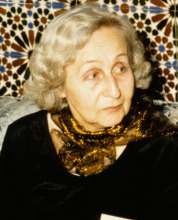
Oskar Kokoschka was an Austrian artist, poet, playwright, and teacher best known for his intense expressionistic portraits and landscapes, as well as his theories on vision that influenced the Viennese Expressionist movement.

Ivan Meštrović was a Croatian and Yugoslav sculptor, architect, and writer. He was the most prominent modern Croatian sculptor and a leading artistic personality in contemporary Zagreb. He studied at Pavle Bilinić's Stone Workshop in Split and at the Academy of Fine Arts Vienna, where he was formed under the influence of the Secession. He traveled throughout Europe and studied the works of ancient and Renaissance masters, especially Michelangelo, and French sculptors Auguste Rodin, Antoine Bourdelle and Aristide Maillol. He was the initiator of the national-romantic group Medulić. During the First World War, he lived in emigration. After the war, he returned to Croatia and began a long and fruitful period of sculpture and pedagogical work. In 1942 he emigrated to Italy, in 1943 to Switzerland and in 1947 to the United States. He was a professor of sculpture at the Syracuse University and from 1955 at the University of Notre Dame in South Bend, Indiana.
Alojz Rigele was a Slovak sculptor and painter. He spent most of his life working in today's Bratislava, where numerous examples of his statues survive to this day. Rigele was considered to be among the leading sculptors in Slovakia before World War I. His specialty was sculpture, especially portrait.
Events from the year 1980 in art.

The Muzeon Park of Arts is a park outside the Krymsky Val building in Moscow shared by the modern-art division of the Tretyakov Gallery and the Central House of Artists. It is located between the Park Kultury and the Oktyabrskaya underground stations. The largest open-air sculpture museum in Russia, it has over 1,000 artworks currently in its collection.

Sergio Andres Peraza Avila is an artist sculptor from Mexico.
Anastacio Tanchauco Caedo was a Filipino sculptor. His style of sculpture was classical realist in the tradition of his mentor, Guillermo Tolentino.
Getik Baghdasarian also Baghdasaryan(Armenian: Գետիկ Հովհաննեսի Բաղդասարյան; born 26 February 1949, Sisian, Syunik Province) is an Armenian sculptor based in Yerevan. He is a nephew of architect Baghdasar Arzoumanian.

Martina Schettina is an Austrian artist. The main part of her work is Mathematical art.

Pablo Curatella Manes was a prolific Argentine sculptor.

John Tarrell Scott was an American sculptor, painter, printmaker, collagist, and MacArthur Fellow. The works of Scott meld abstraction with contemporary techniques infused with references to traditional African arts and Panafrican themes.

Mitchell Fields was a Romanian-born American sculptor, known for his life-size sculptures, as well as for his portraits. Fields's works belong to the schools of Realism and Social Realism.

Matvey Afanasyevich Chizhov (1838–1916) was a Russian sculptor.

Mariam Hakobyan is an Armenian sculptor based in Armenia.
Erica Tietze-Conrat (née Erika Conrat, also known as Erica Tietze; born June 20, 1883 – died December 12, 1958) was an Austrian-born American art historian, one of the first women to study art history, a strong supporter of contemporary art in Vienna and an art historian specializing in Renaissance art and the Venetian school drawings.

The Museum of Arts of Uzbekistan is the largest national art museum in Tashkent, Republic of Uzbekistan. Its permanent collection contains more than several thousands works, divided among four curatorial departments. The museum was established in 1918 as a "Museum of People University" and renamed as the "Central Arts Museum" later. It was named as the "Tashkent Art Museum" in 1924 and finally the "Museum of Arts of Uzbekistan" in 1935.

Maria Lvovna Dillon (1858–1932) was a Russian sculptor. She is known for her allegorical, genre, memorial, and portrait sculpture. Dillon is acknowledged as the first Russian female professional sculptor.
Ana Vidjen is a Yugoslav, Croatian and Serbian sculptor. She obtained her MA in sculpture in 1962 at Athens School of Fine Arts, and was encouraged in her chosen field by the Greek feminist poet and writer Eleni Vakalo as well as the painter Milo Milunovic, who founded the Academy of Fine Arts in 1937. Her work includes sculptures in stone, wood and bronze, drawings, paintings and ceramics.
Erwin Lang was an Austrian painter. His work was part of the painting event in the art competition at the 1928 Summer Olympics. On December 14th, 2007, Erwin Lang's oil on canvas painting The Dancer Grete Weisenthal With Her Son and Sister was sold at auction in New York via Christie's for $51,400.

Galina Anatolyevna Pugachenkova was a Soviet archaeologist and art historian, regarded as a founder of Uzbek archaeology and central to the progression of archaeology and art history under Soviet regimes. Her work has contributed greatly to the register of surviving buildings in Central Asia and in many cases was the first register of traditional surviving buildings. Pugachenkova directed a branch of the archaeological expedition of southern Turkmenistan from 1946 to 1961, and of the Uzbek historical-artistic expedition from 1959 to 1984.












